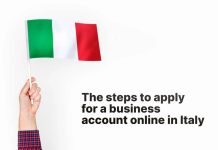The global economy offers both possibilities and problems for companies trying to increase their influence and scope. Success depends on adapting to many cultural, economic, and technological environments as markets grow more linked. Companies that value innovation and adaptability improve their competitiveness and help themselves negotiate the complexity of global trade. Organisations can develop powerful strategies that guarantee long-term success in an always-changing market by using cutting-edge technologies, forming close alliances, and pledging sustainable practices.

The importance of adaptability in a global economy
This paragraph emphasises the need for companies to be adaptable when negotiating the complexity of global markets. Businesses that can quickly modify their tactics, goods, and services—including white label forex solutions—are more likely to survive to satisfy the various needs of clients from many backgrounds and economies. Accepting change improves competitiveness and stimulates creativity so that companies may profit from new trends and technologies. Businesses that prioritise flexibility will be able to control risks and grab possibilities, guaranteeing long-term success in a fast-changing world.
Leveraging technology for business growth
Using modern technologies can greatly improve running efficiency and propel company expansion. Companies may simplify procedures, enhance decision-making, and customise consumer experiences by including artificial intelligence, data analytics, and cloud computing, among other tools. These developments help companies scale quickly and react to market needs with agility, lowering expenses as well. Adopting technology encourages a culture of ongoing development, enabling companies to remain relevant and competitive in an always-changing global economy.
Building strong partnerships for global success
Navigating the complexity of international marketplaces depends on developing strong contacts with players throughout different areas. Working with nearby companies, suppliers, and distributors will help one understand cultural quirks and consumer preferences, enabling more seamless market entrance and growth. Along with improving resource sharing and creativity, these alliances help to build credibility and trust among various client bases. Giving teamwork top priority will help businesses use group strengths, enabling them to address problems more successfully and accomplish worldwide sustainable development.
Strategies for sustainable growth and resilience
Businesses trying to survive global problems must have a long-term vision that stresses sustainability. Adopting policies that include social responsibility, ethical procurement, and a resource economy improves brand recognition and draws an increasing number of consumers who share environmental concerns. Investing in strong supply networks and diversified product offers helps businesses better weather customer demand changes and economic swings. Giving sustainability a priority guarantees creativity and adaptability, thereby ensuring that businesses stay competitive and help the surroundings in which they work.
Conclusion
Ultimately, companies wishing to be successful in a globally competitive market that is getting increasingly cutthroat must be able to adapt, apply technology, create strong alliances, and stress sustainability. Companies that live by these values will be more able to overcome obstacles, strengthen their competitive advantage, and encourage innovation, thereby arming themselves for long-term resilience and steady development. Those who keep their ability for adaptation and sensitivity to change will not only be able to survive but also flourish as the terrain changes, therefore benefiting their stakeholders as well as society at large.
I am a writer based in London, specialising in finance, trading, investment, and forex. Aside from the articles and content I write for IntelligentHQ, I also write for euroinvestor.com, and I have also written educational trading and investment guides for various websites including tradingquarter.com. Before specialising in finance, I worked as a writer for various digital marketing firms, specialising in online SEO-friendly content. I grew up in Aberdeen, Scotland, and I have an MA in English Literature from the University of Glasgow and I am a lead musician in a band. You can find me on twitter @pmilne100.







































